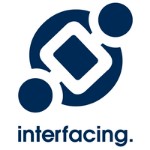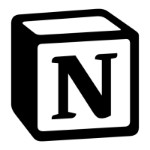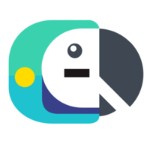The rise of remote work can be traced back to significant advancements in technology and a paradigm shift in societal expectations of work.
This trend toward remote workers was accelerated by the COVID-19 pandemic, which forced many organizations to adapt to remote working conditions almost overnight. As a result, effective collaboration among remote teams has become crucial, given that team members are geographically dispersed.
Remote collaboration, while beneficial, comes with its own set of challenges. These include issues related to communication, coordination, trust-building, and maintaining productivity levels. Moreover, the lack of face-to-face interaction can lead to miscommunication and reduced team cohesion.
Remote collaboration tools or working tools are software applications designed to facilitate seamless communication, coordination, and collaboration among remote team members. They help overcome the challenges of remote work by enabling real-time communication, task management, document collaboration, and more.
This guide will explore various remote collaboration software tools, their features, and how they enhance remote work.

Communication and Messaging Tools
Overview of Communication Tools
Communication tools such as Slack, Microsoft Teams, and Google Meet have become indispensable in the remote working ecosystem. They facilitate instant messaging, audio and video calls, and group discussions, enabling remote employees to stay connected regardless of their geographical location.
Features of Communication Tools
These tools offer a range of features designed to improve communication efficiency. They provide chat channels for different teams or topics, allowing for organized and focused discussions. Video conferencing features enable face-to-face interaction, promoting clearer communication and stronger team relationships. Moreover, they offer file-sharing capabilities, making it easy for team members to share documents and other resources.
Benefits of Real-time Communication for Remote Teams
Real-time communication best collaboration tools is vital for remote teams. It enables instant feedback, immediate problem-solving, and fosters a sense of unity among team members. These tools mimic the instantaneous communication of physical office spaces, making remote collaboration more efficient.
Tips for Effective Communication Using These Tools
While using these tools, it’s crucial to maintain clear and concise communication to avoid any misunderstandings. Regular voice and video calls and meetings can help build a team culture and establish rapport among team members. Also, maintaining different channels for various topics can help keep discussions focused and relevant.

Project Management and Task Tracking Tools
Introduction to Project Management Tools
Project management tools such as Trello, Asana, and Jira play a pivotal role in organizing and managing work in a remote setting. These tools help teams to plan, coordinate, and track their tasks and projects efficiently.
Features of Project Management Tools
Key features of these project management software tools include task assignment, progress tracking, and deadline setting. Task assignment allows for clear distribution of responsibilities among team members. Progress tracking enables managers to monitor the advancement of tasks and projects, ensuring that everything is on track. Setting deadlines helps keep the team focused and aligned with the project timeline.
Importance of Task Management for Remote Teams
Effective task management is essential for remote teams. It ensures all team members using remote tools are aware of their responsibilities, understand their role in the broader project context, and are able to collaborate effectively towards a common goal.
Strategies to Optimize Project Management Using These Tools
To make the most out of these tools, teams should ensure that all tasks are clearly defined and assigned to appropriate team members. Regularly updating the progress of tasks helps keep everyone informed and fosters transparency. Using these tools to visually map out projects can also aid in understanding the project’s flow and identifying any potential bottlenecks.

Document Collaboration and File Sharing Tools
Overview of Document Collaboration Tools
Document collaboration tools, such as Google Docs, Dropbox Paper, and Microsoft 365, offer a platform where multiple team members can simultaneously access, edit, and comment on documents. These tools enable real-time team collaboration tools and ensure everyone is working on the most recent version of a document.
Features of Document Collaboration Tools
These tools offer features like real-time editing, which allows multiple team members to work remotely on a document at the same time. Version control ensures that all edits are tracked and allows users to revert to previous versions if needed. Additionally, document sharing options enable users to distribute documents easily within their team or with external collaborators.
Advantages of Document Collaboration for Remote Teams
Document collaboration tools make it possible for remote teams to work together as if they were in the same room, fostering a more collaborative and efficient work environment. They also reduce the risk of errors or conflicts that may arise from working remotely on separate versions of a document.
Best Practices for Efficient Document Collaboration
For effective document collaboration, it’s essential to maintain an organized system for document storage and retrieval. Regularly updating and backing up documents can help prevent loss of information. Using the commenting and track changes features can facilitate feedback and improve the revision process. Lastly, access permissions for file storage should be managed properly to ensure that only the relevant individuals have access to specific documents.

Virtual Whiteboarding and Visual Collaboration Tools
Introduction to Virtual Whiteboarding Tools
Virtual whiteboarding tools like Miro, Mural, and Microsoft Whiteboard, provide a digital canvas for teams to brainstorm ideas free plan together, design workflows, and visualize concepts. They offer an interactive platform for remote teams to collaborate visually, fostering creativity and engagement.
Features of Virtual Whiteboarding Tools
These tools come with virtual whiteboards equipped with features that allow for brainstorming sessions, visualization screen sharing of ideas, and collaborative drawing. Team members can simultaneously interact with the digital whiteboard, making it a dynamic tool for live collaborative sessions. Many of these tools also offer templates and frameworks for different use cases, like project planning, user story mapping, and design thinking workshops.
Benefits of Visual Collaboration for Remote Teams
Visual collaboration tools help bring a team’s ideas to life, making it easier to understand and communicate complex concepts. They foster a more engaging and inclusive collaboration process, allowing every team member to contribute visually in real-time. This can improve team cohesion, spark creativity, and lead to more innovative software solutions too.
Techniques to Foster Creativity and Collaboration Using These Tools
To foster creativity and collaboration using these tools, teams should hold regular brainstorming sessions and encourage all members to contribute their ideas visually. Utilizing pre-designed templates can help structure these sessions and make them more productive. It’s also important to create a safe and open environment where everyone feels comfortable sharing their thoughts and feedback.

Time Tracking and Productivity Tools
Overview of Time Tracking and Productivity Tools
Time tracking and productivity tools such as Toggl, RescueTime, and Notion provide a way for teams to manage their time effectively and boost productivity. They offer features that help individuals and teams track how much time is spent on various tasks, set goals, and analyze productivity patterns.
Features of Time Tracking and Productivity Tools
These tools offer features like time logging, which records how much time is spent on different tasks, providing insights into how time is being utilized. Goal setting features allow individuals to set and track progress towards their objectives. Productivity analytics provide an overview of work patterns, helping to identify areas of inefficiency and highlight opportunities for improvement.
Importance of Time Management for Remote Teams
Time management is particularly important for remote teams as it influences productivity, work-life balance, and overall team performance. Effective time management can help teams meet deadlines, reduce stress, and create a more balanced and productive work environment.
Strategies to Enhance Productivity and Track Progress Using These Tools
To make the most of these tools, it’s crucial to regularly log time spent on tasks to get an accurate understanding of time usage. Setting clear and measurable goals can help focus efforts and drive motivation. Regularly reviewing productivity analytics can provide valuable insights into work patterns and help identify areas for improvement. Moreover, fostering a culture of accountability can encourage team members to manage their time effectively.

Training and Learning Tools
Introduction to Training and Learning Tools
As remote work continues to evolve, the need for ongoing training and learning has never been more crucial. Training and learning tools can help remote teams acquire new skills, stay updated with the latest industry trends, and promote continuous professional development.
Overview of Tools like Zoom, Coursera for Business, and LinkedIn Learning
Zoom, widely known for video conferencing, also provides webinar and training functionalities. It enables interactive online sessions, which can be recorded for future reference.
Coursera for Business offers an expansive catalog of courses from top universities and industry leaders. Teams can access courses on various subjects, promoting continual learning and skill development.
LinkedIn Learning is another platform that provides a multitude of online courses. From software skills to leadership training, it offers content suitable for different roles and levels in an organization.
Features like Interactive Sessions, Course Catalogs, and Skill Development
Interactive sessions through tools like Zoom allow for engaging and effective learning experiences. Large course catalogs provided by Coursera and LinkedIn Learning give teams the flexibility to learn according to their needs and pace. These platforms often offer features like learning paths or recommended courses, facilitating targeted skill development.
Importance of Training and Learning for Remote Teams
Training and learning tools foster a culture of continuous learning, which is vital in today’s fast-paced work environment. They help teams stay updated, enhance their skills, and consequently improve their performance and productivity. They also promote personal development, which can contribute to higher job satisfaction and retention.
Strategies to Implement Training and Learning Tools
To effectively implement these tools, consider your team’s learning needs and preferred learning styles. Encourage a learning culture by allotting specific time for learning and sharing learnings within the team. Finally, track and recognize the learning progress to maintain motivation. The right training and learning tools, when used effectively, can become a powerful catalyst for your team’s growth.

Collaborative Design Tools
Introduction to Collaborative Design Tools
In an era of remote work, collaborative design tools have become essential for creative teams. These tools allow designers to create, share, and iterate on their designs in real-time, irrespective of their geographical locations.
Overview of Tools like Figma, InVision, and Sketch
Figma is a browser-based design tool that allows multiple people to collaborate on designs simultaneously. With vector editing and prototyping capabilities, it’s a comprehensive tool for teams to brainstorm, create, and test their ideas.
InVision provides a platform for transforming static designs into interactive, clickable prototypes. It also facilitates real-time collaboration and feedback, making it easier for teams to refine their designs.
Sketch, although primarily a macOS application, also provides a cloud-based platform where teams can collaborate, test, and gather feedback on their designs.
Features like Real-Time Collaboration, Prototyping, and Feedback
Real-time collaboration features in these tools allow multiple team members to work on the same design simultaneously, promoting synergy and efficient workflow. Prototyping features enable teams to create and test interactive models of their designs, while feedback features make it easier to collect and incorporate suggestions and improvements.
Importance of Collaborative Design Tools for Remote Teams
Collaborative design tools are crucial for remote teams, as they streamline the design process, enhance communication, and speed up decision-making. They allow for instant feedback and reduce the need for lengthy email threads or meetings. By enabling teams to work together seamlessly, these tools can significantly improve productivity and creativity.
Strategies to Implement Collaborative Design Tools
Implementing collaborative design tools successfully involves considering the team’s specific needs and workflows. Ensure the tool is compatible with your team’s hardware and software. Encourage your team to familiarize themselves with the tool, and create a system for managing and organizing design files. Regularly collect feedback from your team to ensure the tool is meeting their needs and helping them achieve their best work.

Security and Privacy Considerations
Importance of Data Security and Privacy in Remote Collaboration
As remote collaboration often involves sharing sensitive information across different locations and devices, data security and privacy become crucial. Ensuring that your team’s communication, files, and other data are secure is a primary concern for all organizations.
Encryption, Access Control, and Data Protection Measures
Many remote collaboration tools employ various security measures to protect your data. These include end-to-end encryption, which ensures that only the sender and the intended recipient can access the information being shared. Access control features allow administrators to define who can access what information. Many remote work tools also have robust data protection measures in place, such as secure data centers, automatic backups, and compliance with international security standards.
Recommendations for Maintaining Security While Using Remote Collaboration Tools
To maintain security, it’s recommended to use strong, unique passwords for all tools and enable two-factor authentication where available. Be cautious about who has access to sensitive information and ensure that access controls are appropriately set. Regularly review and update security settings to match the evolving needs and risks. Additionally, ensure that all team members are educated about best practices for data security and privacy.

Remote Collaboration Tools – FAQ
How do I choose the right collaboration tools for my team?
Choosing the right, collaboration platform and tools for your team depends on your team’s specific needs. Consider factors like the size of your team, the nature of your projects, and your team’s working style. It can be helpful to test out a few different collaboration tools for remote, to see which ones fit your team best.
Can these tools integrate with other existing software?
Most modern collaboration tools are designed to integrate with a wide range of other software. This allows you to streamline your workflows and keep all your tools connected.
However, the specific integrations available will depend on the tool, so it’s best to check the tool’s documentation or contact their support team for precise information.
How do remote collaboration tools help overcome time zone differences?
Remote collaboration tools often come with features like asynchronous communication, flexible task assignment, and progress tracking that can help manage work across different time zones.
They allow team members to communicate and collaborate effectively, regardless of when and where they are working.
What are the best practices for onboarding new team members to these tools?
When onboarding new team members, it’s important to provide clear instructions and training on how to use the collaboration tools your team uses. You can create guides or use existing tutorials provided by the collaboration tool itself.
It may also be helpful to also assign tasks to a mentor or buddy who can assist the new member in getting up to speed.
How do these tools handle scalability for growing remote teams?
Most collaboration tools are designed to be scalable and can accommodate teams of various sizes. As your team grows, these tools can usually be upgraded to offer additional features or capacity.
However, it’s always a good idea to review the scalability of a tool before implementing it to ensure it can handle your team’s potential growth.
What are some ways to maintain team engagement using these tools?
Team engagement can be enhanced by utilizing features like video conferencing for face-to-face interactions and virtual meetings, creating casual chat channels for non-work related conversations, and using collaborative spaces for brainstorming and idea sharing.
Regularly acknowledging and appreciating team members’ work can also foster a sense of belonging and motivation.
How do we ensure effective communication with these tools?
Effective communication can be ensured by setting clear guidelines on how and when to use different tools and features.
For instance, teams can establish ‘quiet hours’ to minimize disruptions, or agree on promptness of responses. Also, using features like read receipts can help confirm that important messages are seen.
Can these tools be accessed on various devices?
Most modern collaboration tools are designed to work across multiple platforms and devices, including desktops, laptops, tablets, and smartphones.
This makes it possible for team members to stay connected and collaborate effectively, regardless of the device they’re using.
What support is typically available if we encounter issues with these tools?
Most collaboration tools offer a variety of support options, including user guides, FAQs, tutorials, online forums, and customer support via email, phone, or live chat.
The level and availability of support can vary between providers, so it’s worth checking what’s available when choosing a tool.
How do these tools facilitate project management in a remote setting?
Collaboration tools can streamline project management by enabling task assignment, project management tool progress tracking, and deadline setting.
They offer visual interfaces where everyone can see the status of various tasks and projects, which helps keep everyone aligned and informed. They also facilitate communication and collaboration, which are key to successful project management.

Conclusion
The rise of remote work has made the use of collaboration tools more important than ever. These tools have transformed the way we communicate, manage tasks, share files, schedule meetings and brainstorm ideas in a remote setting, creating a seamless and efficient working environment.
Remote collaboration tools not only help to overcome the challenges of distance and different time zones but also improve the remote team collaboration productivity and cohesion.
Their capabilities range from real-time communication, task and project management, document collaboration, visual brainstorming, to effective time management. All these contribute to a more collaborative, innovative, and successful using remote team collaboration tools.
Nevertheless, finding the right online collaboration tools that suit your team’s unique needs and workflows is crucial. And while these virtual collaboration tools indeed offer numerous benefits, they also come with the responsibility of handling sensitive data.
Therefore, considering security and privacy features is as important as evaluating collaborative features.
As we move further into the era of remote work, these various tools for remote teams will only continue to evolve and become even more essential. But with the vast number of options available, making the right choice might seem overwhelming.
That’s where Serchen.com, our software marketplace, comes in. We encourage you to leverage the free version of Serchen to explore and compare a variety of remote and collaboration software tools.
Their platform provides comprehensive information and reviews to help you make an informed decision.
So don’t wait any longer. Elevate your team’s own remote work tool, collaboration capabilities and productivity by finding the perfect remote collaboration tool or tools on Serchen today. The future of effective remote work is just a click away!















